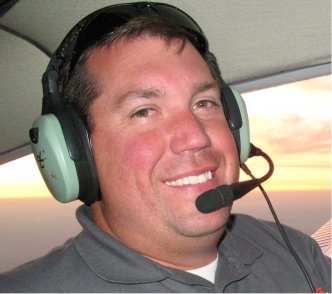5 CFI checkride myths
CFI checkrides come with myths, expectations, stories, and many falsehoods. When administrated properly by an FAA designated pilot examiner (DPE), very little should be mystical about how they will go, the subjects on which a CFI applicant will be tested, and the resources that can be used.
That doesn’t mean there aren’t myths about the process. Let’s dispel a few myths about CFI checkride and perhaps give a CFI candidate some insights on how to build strategy for passing the practical test on the first try.
You Need to Create All Your Own Teaching Materials: FALSE. This would be like someone saying your high school history teacher had to write the entire history book that covers the subjects he or she was going to teach. Teach from established materials. There are great training product providers out there that work hard to present subject matter from which you can teach. No examiner should expect an applicant to know everything; in fact, as a DPE, I highly value instructors who know their limits and are well-versed in materials from which they will teach. Be highly familiar with materials, use quality materials, and be able to use them effectively in teaching subjects on which you will be tested for your CFI.
You Can’t Take Breaks: FALSE. Whew, thankfully, not the truth. The examiner gets tired also. It is perfectly fine to take breaks between subject areas. This is a practical test, not a torture session for the applicant or the examiner. You wouldn’t expect a student to learn for four hours straight, right? In fact, if you did your studying on the Fundamentals of Instruction, you would make the case that a student couldn’t effectively learn this long. Testing can include bathroom or stretch breaks, or a break to refill that coffee or get some water. Use these breaks to refresh, stay hydrated, and even grab a snack to keep your blood sugar going through the work that you will be doing as a CFI candidate, similar to what you would be doing as an active CFI when you pass.
You Need to Memorize All the Endorsements You Would Give as an Instructor: FALSE. Few CFIs have memorized all the potential endorsements they might give to a student pilot, a pilot being prepared for a practical test, or an add on endorsement such as a tailwheel or complex endorsement. Those who claim they have and do it all from memory will rarely be able to do all of them correctly from memory. And as a CFI applicant, you shouldn’t have to either. The FAA has an Advisory Circular 651.65(H) that gives approved examples of frequently used endorsements. When your DPE asks you to what endorsements a student might need for a scenario, take out your resource and do it as you would if you were making sure you were doing your job correctly.
You Will Be Tested on Everything: FALSE. The CFI Practical Test Standards (PTS) don’t require that a DPE cover everything on a CFI practical test. It is a sampling. Get very familiar with the CFI PTS to know exactly how the practical test will be administrated and you will find that there are some subject areas that are required, and many subject areas from which the DPE will sample one or two of a subtask area on the practical test. If the DPE had to test everything, the test would take days. A DPE on an initial CFI practical test is tasked with sampling to ensure that the training must cover all the required areas, but everything won’t be tested on practical test day. Take the time if you are preparing for a CFI practical test to know not only what you need to train your students in the Airman Certification Standards standards, but also what your test consists of by being familiar with the intricacies of the CFI PTS.
It’s about Being a Perfect Pilot from the Right Seat: FALSE. You don’t have to be a perfect pilot from the right seat to pass your practical test. Sure, you need to be able to perform and demonstrate maneuvers within the appropriate ACS or PTS standards, but it’s more about teaching than being perfect. The goal is to be able to demonstrate and teach maneuvers in a way that students in the left seat would be able to learn to do them themselves. Teach the maneuver, don’t simply do it from the right seat. Be able to correct common errors and how maneuvers could go wrong. This is a critical point. It isn’t about taking the controls away from students but instead guiding them to correct any errors they make into compliance with standards. A great instructor flies an aircraft through their students’ hands by teaching them, not just flying the maneuvers themselves from the right side of the aircraft.
Being a good CFI isn’t about being a good right-seat pilot or knowing everything. A good CFI is a good teacher. Keep that in mind, and it will go a long way on your CFI practical test. Prepare ahead as if you are a teacher, and perform as a teacher on the practical test, and your odds of passing go up significantly.



